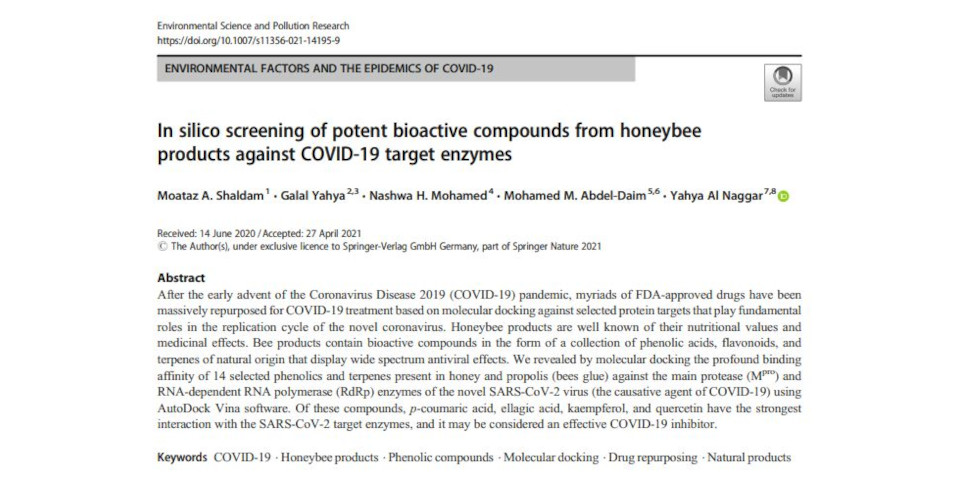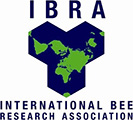Abstract
After the early advent of the Coronavirus Disease 2019 (COVID-19) pandemic, myriads of FDA-approved drugs have been massively repurposed for COVID-19 treatment based on molecular docking against selected protein targets that play fundamental roles in the replication cycle of the novel coronavirus. Honeybee products are well known of their nutritional values and medicinal effects. Bee products contain bioactive compounds in the form of a collection of phenolic acids, flavonoids, and terpenes of natural origin that display wide spectrum antiviral effects. We revealed by molecular docking the profound binding affinity of 14 selected phenolics and terpenes present in honey and propolis (bees glue) against the main protease (Mpro) and RNA-dependent RNA polymerase (RdRp) enzymes of the novel SARS-CoV-2 virus (the causative agent of COVID-19) using AutoDock Vina software. Of these compounds, p-coumaric acid, ellagic acid, kaempferol, and quercetin have the strongest interaction with the SARS-CoV-2 target enzymes, and it may be considered an effective COVID-19 inhibitor.










